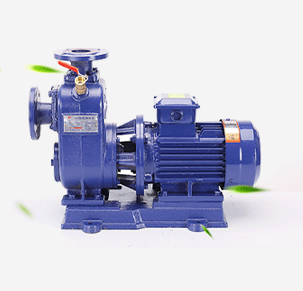English
- Afrikaans
- Albanian
- Amharic
- Arabic
- Armenian
- Azerbaijani
- Basque
- Belarusian
- Bengali
- Bosnian
- Bulgarian
- Catalan
- Cebuano
- Corsican
- Croatian
- Czech
- Danish
- Dutch
- English
- Esperanto
- Estonian
- Finnish
- French
- Frisian
- Galician
- Georgian
- German
- Greek
- Gujarati
- Haitian Creole
- hausa
- hawaiian
- Hebrew
- Hindi
- Miao
- Hungarian
- Icelandic
- igbo
- Indonesian
- irish
- Italian
- Japanese
- Javanese
- Kannada
- kazakh
- Khmer
- Rwandese
- Korean
- Kurdish
- Kyrgyz
- Lao
- Latin
- Latvian
- Lithuanian
- Luxembourgish
- Macedonian
- Malgashi
- Malay
- Malayalam
- Maltese
- Maori
- Marathi
- Mongolian
- Myanmar
- Nepali
- Norwegian
- Norwegian
- Occitan
- Pashto
- Persian
- Polish
- Portuguese
- Punjabi
- Romanian
- Russian
- Samoan
- Scottish Gaelic
- Serbian
- Sesotho
- Shona
- Sindhi
- Sinhala
- Slovak
- Slovenian
- Somali
- Spanish
- Sundanese
- Swahili
- Swedish
- Tagalog
- Tajik
- Tamil
- Tatar
- Telugu
- Thai
- Turkish
- Turkmen
- Ukrainian
- Urdu
- Uighur
- Uzbek
- Vietnamese
- Welsh
- Bantu
- Yiddish
- Yoruba
- Zulu
Telephone: +86 13120555503
Email: frank@cypump.com
Sep . 29, 2024 21:41 Back to list
Exploring the Benefits and Applications of Submersible Pumps in Various Industries
Submersible Pumps An Overview
Submersible pumps are a cornerstone of modern fluid management, engineered to work underwater. These devices are designed to push fluid to the surface and are commonly used in various applications, including residential, agricultural, and industrial settings. Their robust design and efficient operation make them a favored choice for numerous water management tasks.
What is a Submersible Pump?
A submersible pump is a hydraulic pump that operates underwater. Unlike standard pumps that are stationed above the fluid, submersible pumps are submerged in the fluid they are intended to move. This inherent design reduces the risk of cavitation, increases efficiency, and minimizes the chances of the pump losing its prime.
Typically, these pumps comprise an electric motor, a pump body, and often a protective casing to withstand harsh underwater conditions. The electric motor is sealed and hermetically designed to prevent damage from water ingress. This seal ensures that the motor operates efficiently to create the necessary pressure to transport the water to the surface.
How Do Submersible Pumps Work?
The functionality of submersible pumps can be understood through the process of fluid dynamics. When the pump is submerged in water, the motor energizes, causing the impeller—a rotating component within the pump—to spin. This rotation creates a low-pressure area, drawing water into the pump. Once inside, the impeller increases the pressure, pushing the water up through a discharge pipe to the desired location. The design of the impeller and diffuser allows for a smooth flow of water, significantly improving performance and energy efficiency.
The depth of immersion affects the performance of the pump. Submersible pumps can work at a variety of depths, commonly up to several hundred meters, depending on their design and the application. This makes them suitable for multiple environments, including wells, boreholes, and even in drainage and wastewater management systems.
Applications
submersible pum

Submersible pumps are utilized in a multitude of contexts. In residential settings, they are often used for groundwater extraction, particularly in well systems where groundwater must be pumped to the surface for irrigation or drinking purposes. They are also employed in sump applications to prevent flooding in basements by removing accumulated water.
In agriculture, submersible pumps facilitate efficient irrigation systems by drawing water from rivers, lakes, or underground sources directly to crop fields. This practice promotes sustainable water use, reducing dependency on surface water reservoirs.
In industrial applications, submersible pumps play a crucial role in dewatering efforts in construction sites or mining operations, where maintaining dry conditions is essential for safety and productivity. Additionally, they are pivotal in wastewater treatment facilities, where the efficient movement of sewage and stormwater is critical.
Advantages of Submersible Pumps
The versatility and efficiency of submersible pumps provide numerous advantages. Firstly, their submersion in water allows for quieter operation compared to surface pumps. Secondly, their self-priming nature means they can efficiently draw water from deep sources, eliminating the need for additional priming mechanisms.
Energy efficiency is another crucial benefit. Submersible pumps are generally more energy-efficient than surface pumps because they operate under water pressure, which helps reduce the energy required for pumping. Moreover, their durable design often leads to longer operational lifespan, reducing maintenance costs and downtime.
Conclusion
Submersible pumps are essential tools across various sectors, offering efficient, reliable solutions for fluid management. Whether used in residential, agricultural, or industrial settings, their design and capabilities make them incredibly effective for moving water from one place to another. As technology advances, we can expect enhancements in the efficiency and functionality of submersible pumps, further solidifying their role as a critical component in water management strategies worldwide. As demands for water continue to rise, the importance of these pumps will only amplify, making them indispensable in our quest for sustainable and efficient water usage.
-
ISG Series Vertical Pipeline Pump - Chi Yuan Pumps Co., LTD.|High Efficiency, Energy Saving, Low Noise
NewsJul.30,2025
-
ISG Series Vertical Pipeline Pump- Chi Yuan Pumps|High Efficiency&Low Noise
NewsJul.30,2025
-
ISG Series Vertical Pipeline Pump-Chi Yuan Pumps Co., LTD.|High Efficiency&Energy Conservation
NewsJul.30,2025
-
ISG Series Vertical Pipeline Pump - Chi Yuan Pumps Co., LTD.|Advanced Hydraulic Design&Energy-Efficient Solutions
NewsJul.30,2025
-
ISG Series Vertical Pipeline Pump - Chi Yuan Pumps Co., LTD.
NewsJul.30,2025
-
ISG Series Vertical Pipeline Pump - Chi Yuan Pumps Co., LTD.|energy-efficient fluid handling&industrial durability
NewsJul.30,2025










